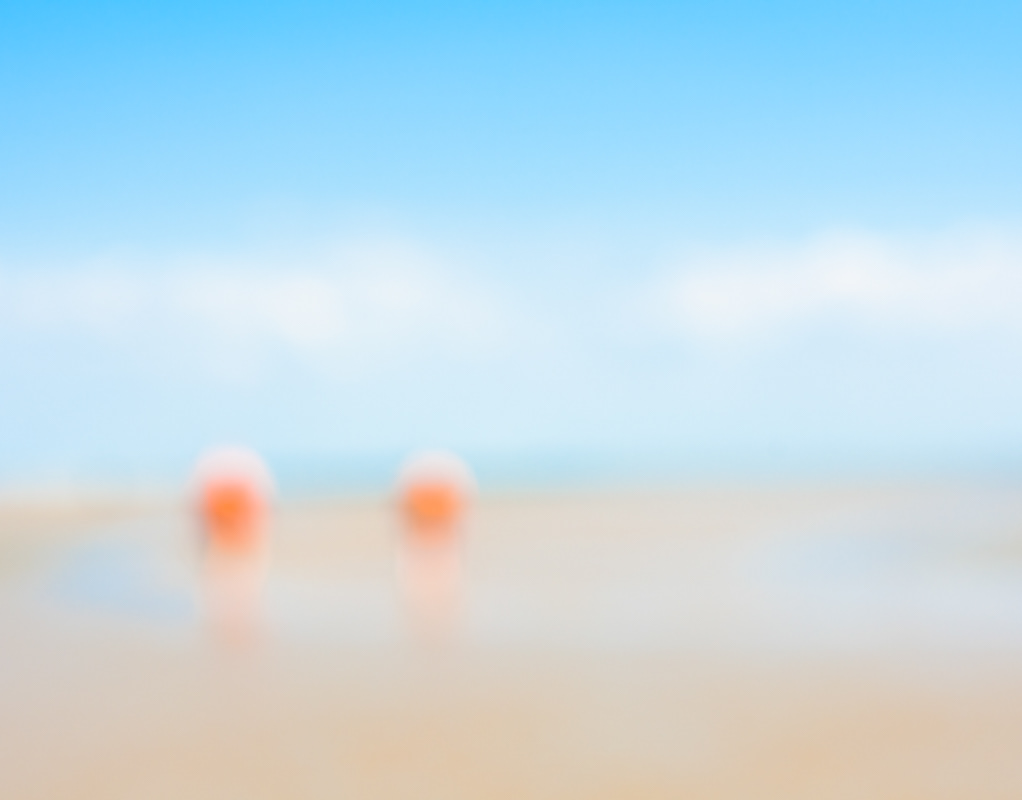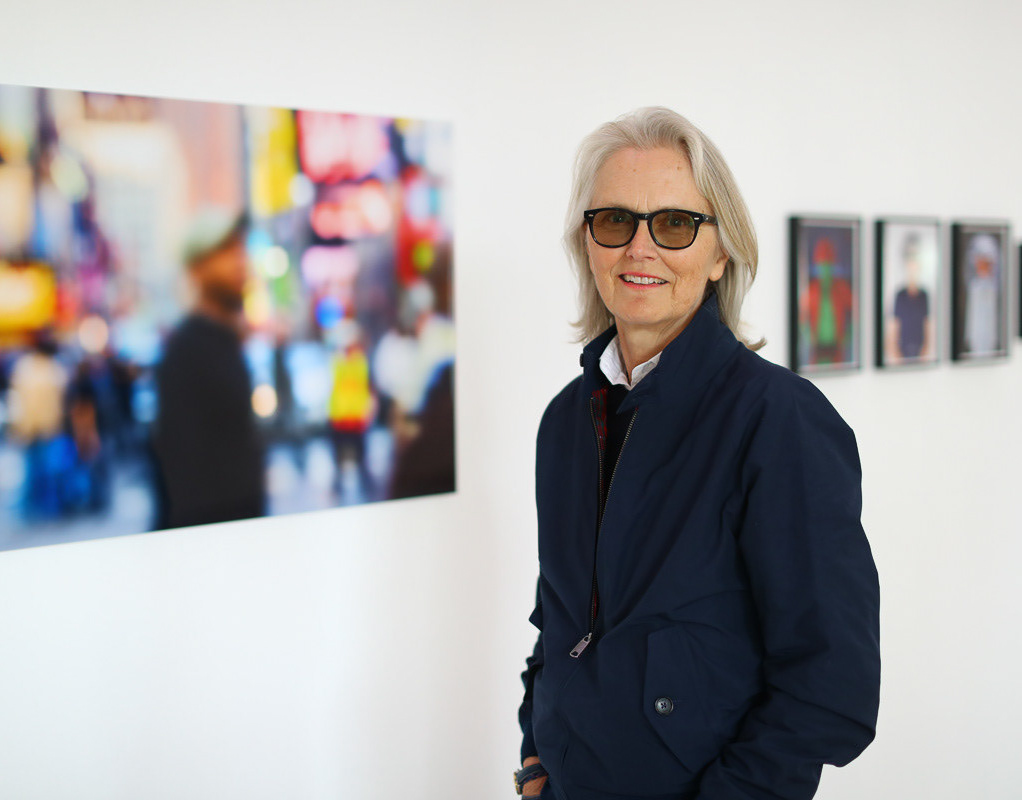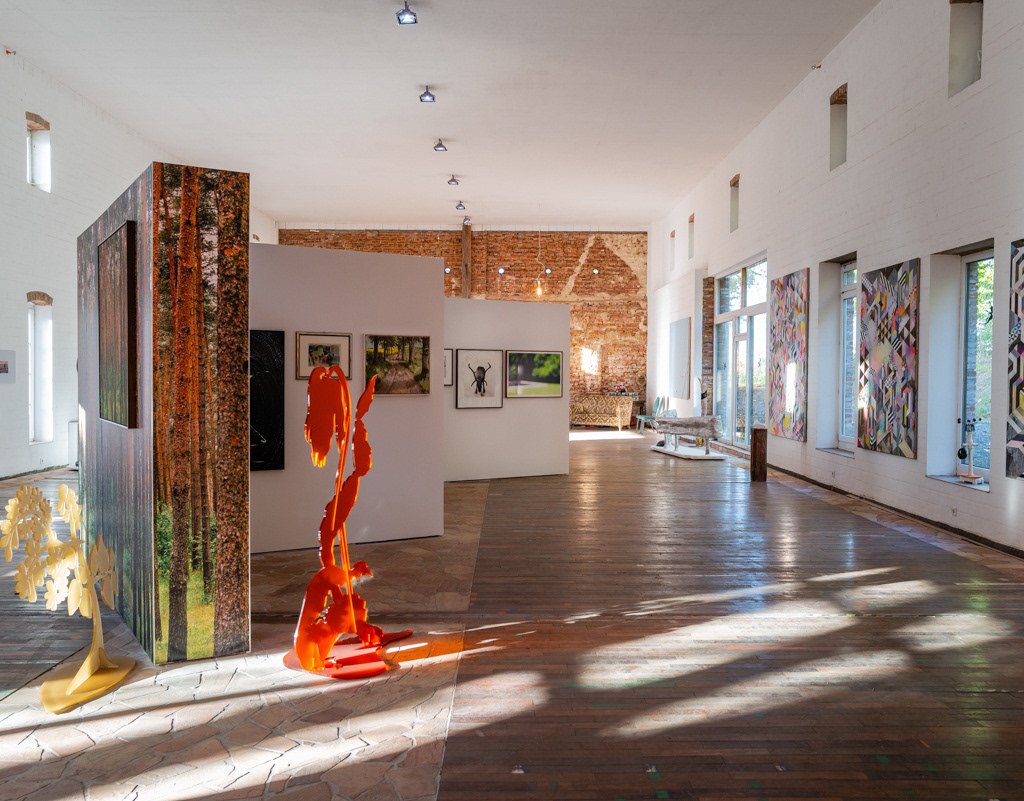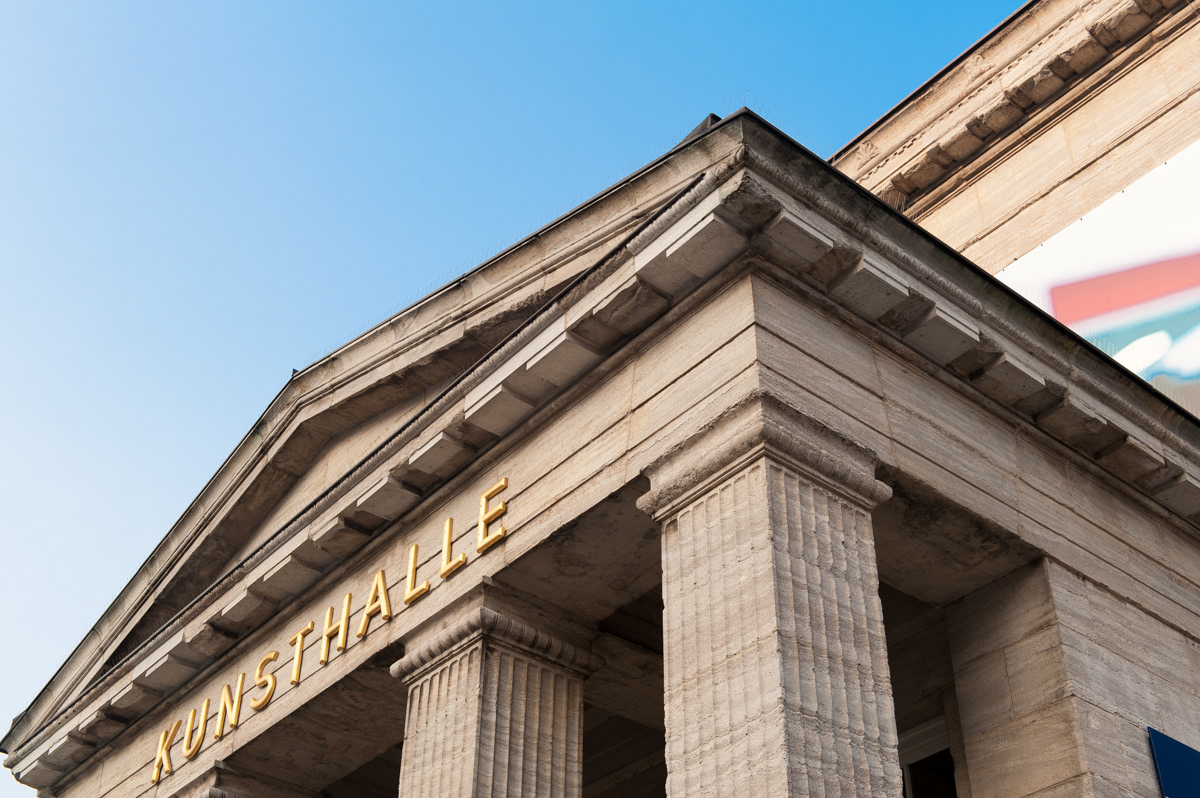
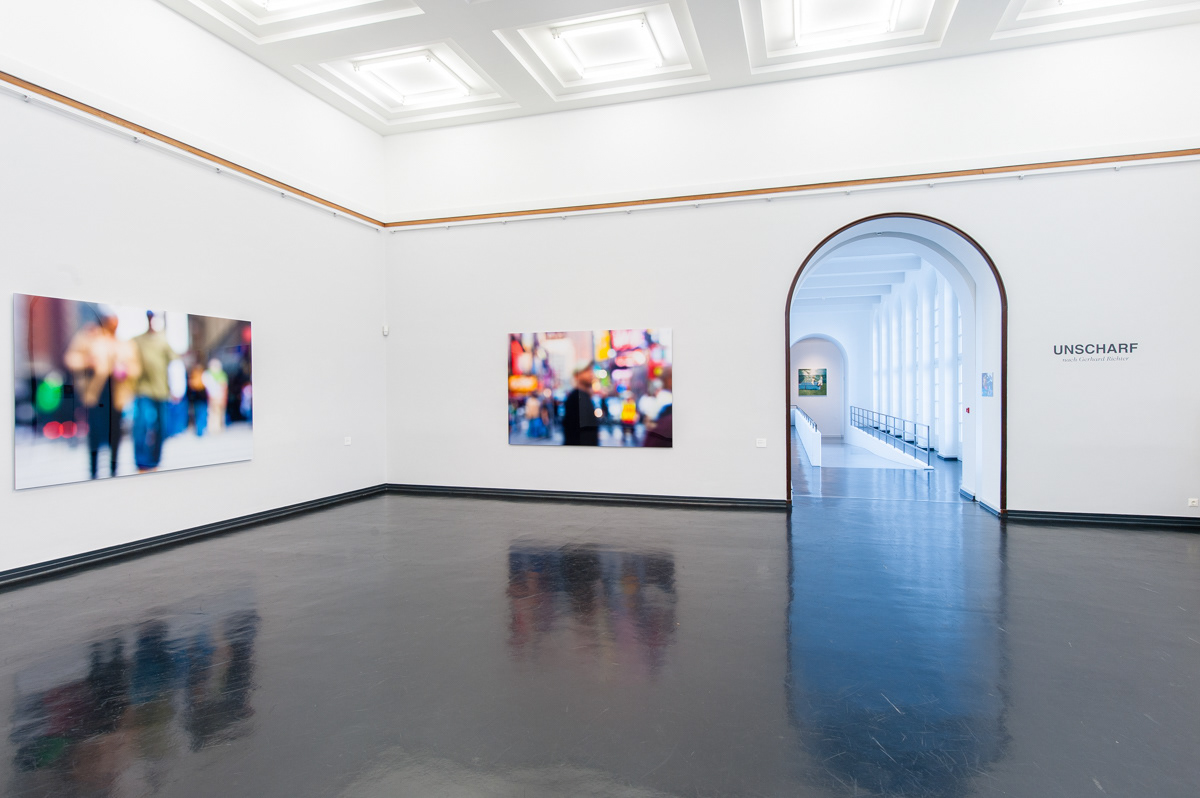
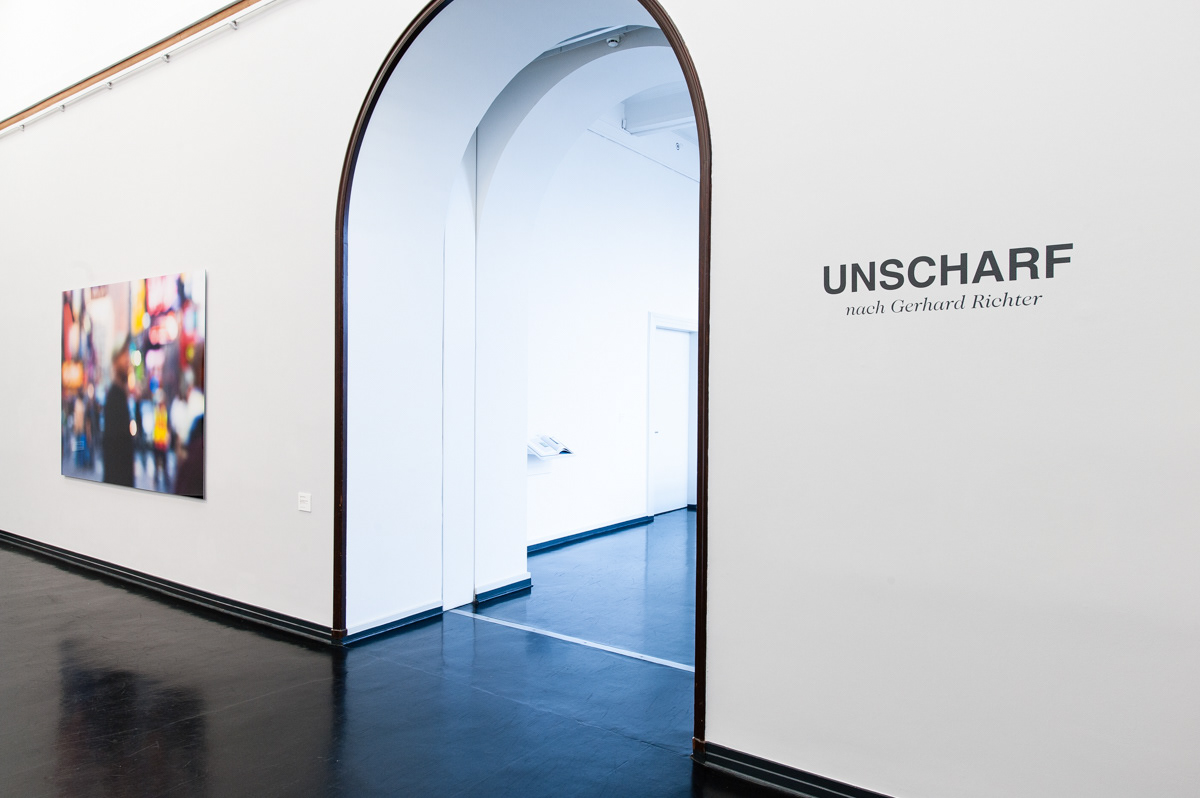



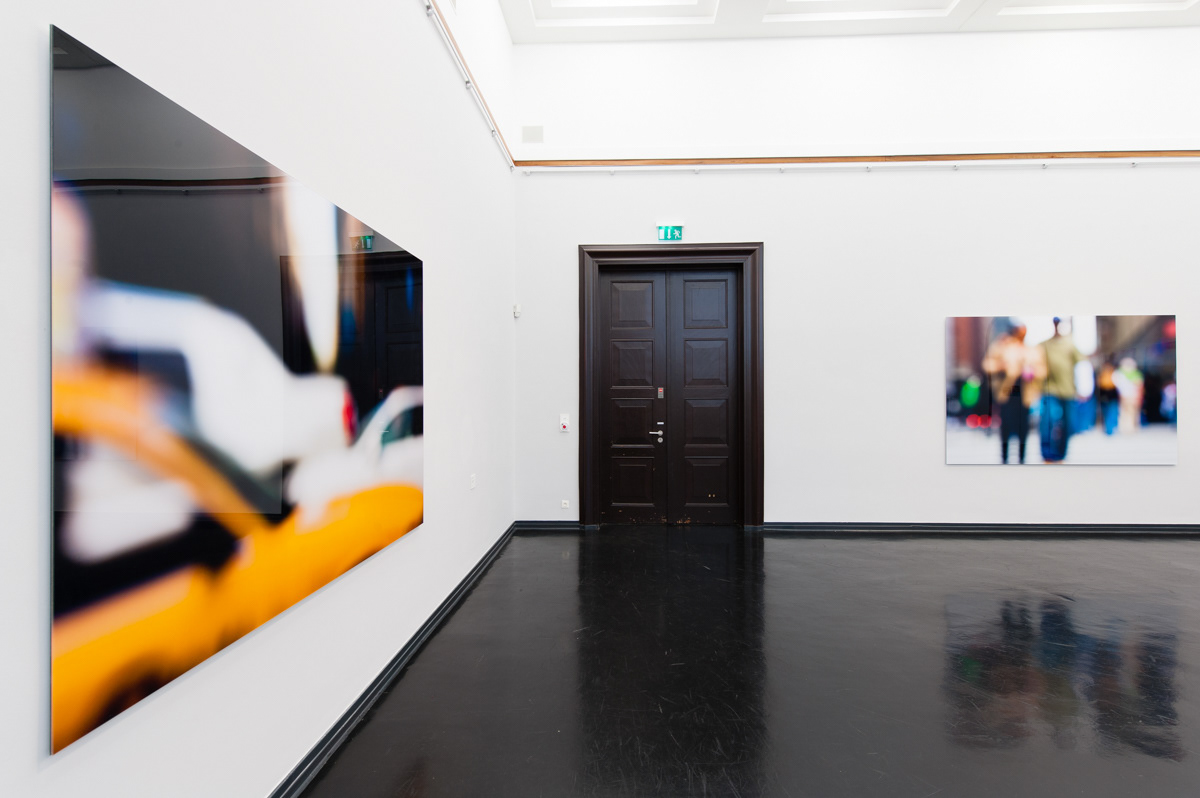
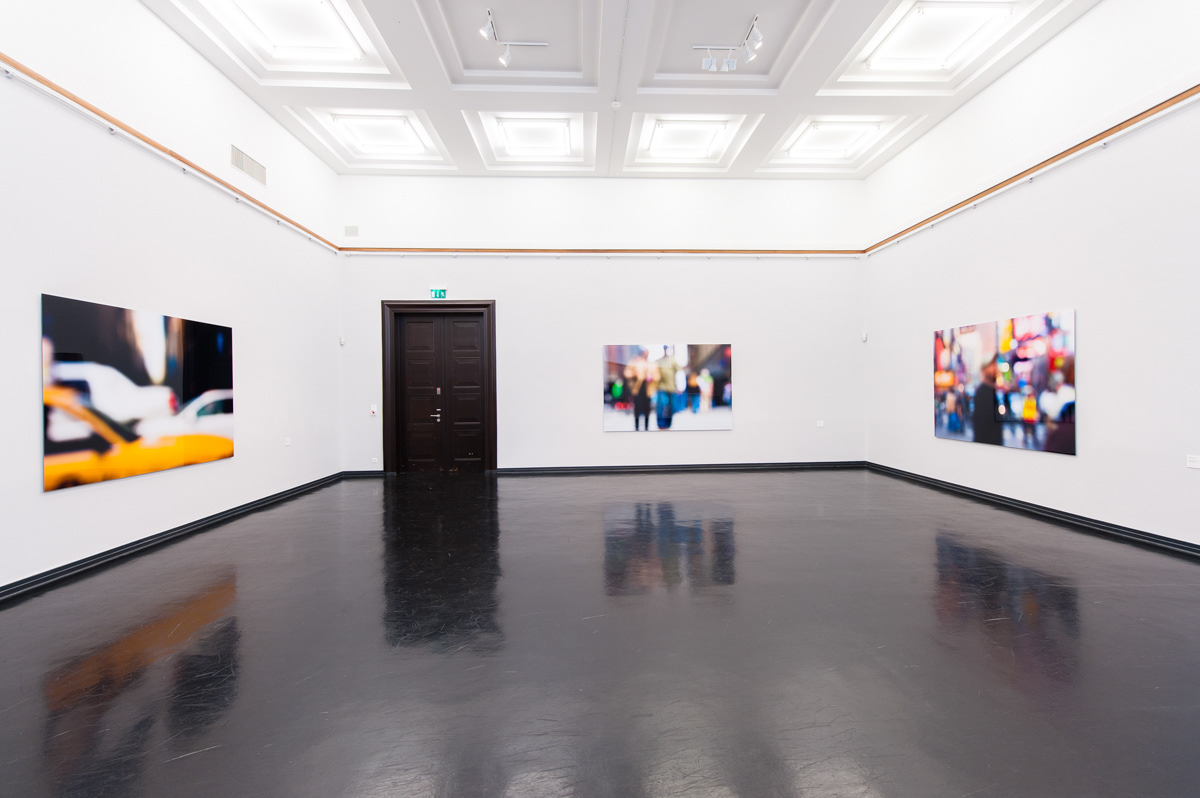
UNSCHARF. Nach Gerhard Richter 11. Februar bis 22. Mai 2011
Erstmals widmet die Hamburger Kunsthalle dem in der zeitgenössischen Kunst weit verbreiteten Phänomen der Unschärfe eine umfassende Museumsausstellung. Wie kein anderer Künstler hat Gerhard Richter (*1932) die Motive seiner Malerei durch Effekte des Verwischens und Verschleierns von Beginn an als unscharf erscheinen lassen. Er setzt das Prinzip der Unschärfe konsequent ein: in seinen figürlichen Gemälden, deren Motive er häufig den populären Printmedien entnimmt, in seinen auf photographischen Vorlagen beruhenden Figuren, Landschaften und Stillleben und nicht zuletzt auch in seiner abstrakten Malerei. Dabei wirft er immer wieder die Frage auf, was ein Bild überhaupt wiedergeben kann, ob es einen Inhalt transportiert oder doch nur seine eigene verführerisch schöne Oberfläche darstellt. Anhand von Gemälden, Photographien sowie einem frühen, unscharfen Film von Gerhard Richter zeigt die Ausstellung, dass sich die Ästhetik der Unschärfe wie ein roter Faden als zentrales Motiv durch sein gesamtes Schaffen zieht. Gerhard Richter wurde damit zum Vorreiter für eine ganze Generation.
Die Ausstellung zeigt die Auseinandersetzung bedeutender, junger Künstlerinnen und Künstler mit der Unschärfe anhand von über achtzig exemplarischen Werken. Veranschaulicht wird, auf welch unterschiedliche Art sie sich in den Medien der Malerei, Photographie, Installation und Video mit der Unschärfe beschäftigen, und welche vielfältigen Aspekte und Fragen sich aus dem Thema ergeben. Häufig sind die Werke Ergebnisse eines komplexen Entstehungsprozesses, der die Grenzen zwischen Malerei und Photographie selbst verschwimmen lässt.
Der Bezug der Bilder zu den Motiven, die sie abbilden und ihr Verhältnis zum Betrachter scheint unsicher geworden zu sein. Für die Künstlerinnen und Künstler nach Richter ist diese Verunsicherung zugleich eine Befreiung. Aus ihren individuellen Herangehensweisen entsteht eine sehr vielfältige und faszinierende Bilderwelt der Unschärfe, die zugleich irritierend und verführerisch wirkt. Insgesamt werden rund 110 Werke gezeigt: Photographien, Gemälde, Installationen und Filme von 23 national und international bedeutenden Künstlern, zusammen mit etwa 20 ausgewählten Gemälden sowie Photographien und dem Film Volker Bradke (1966) von Gerhard Richter.
Die Ausstellung zeigte Arbeiten von
Pablo Alonso, David Armstrong, Anna und Bernhard Blume, Michael Engler, Wolfgang Ellenrieder, Isca Greenfield-Sanders, Maxine Henryson, Nicole Hollmann, Bill Jacobson, Adam Jankowski, Tamara K.E., Wolfgang Kessler, Karin Kneffel, Peter Loewy, Marc Lüders, Ralf Peters, Qiu Shihua, Gerhard Richter, Ugo Rondinone, Johanna Smiatek, Thomas Steffl, Ernst Volland, Franziskus Wendels, Michael Wesely und Paul Winstanley.
Kuratoren der Ausstellung
Prof. Dr. Hubertus Gaßner and Dr. Daniel Koep
________________________________________
OUT OF FOCUS. After Gerhard Richter 11 February to 22 May 2011
Since the 1960s, the art of Gerhard Richter (*1932) has been marked by an out- of-focus appearance. Just as Georg Baselitz has become famous for turning his pictures’ motifs upside down, the blurred and hazy, out-of-focus appearance is seen as typical for Richter’s paintings. This holds true for his representations of figures, landscapes or still-life paintings just as it does for his abstract paintings.
In this way he picks up on a principle that has been introduced into the tradition of European painting since the fifteenth century, like for example in the sfumato- technique of Leonardo da Vinci. Never before however, did the phenomenon of blurred and hazy images take on such a dominant role as in the paintings by Richter. In addition, one major innovation is that even his abstract paintings are blurred and out of focus in certain sections or in overall appearance.
Since its first appearance in paintings by Gerhard Richter, the blurred surface has become a central characteristic in both figurative and abstract paintings and photographs by a large number of younger artists. This exhibition for the first time offers a closer, coherent look at this stylistic principle by presenting the paintings and photographic works by twenty-one artists born after 1960 together with around twenty works and an early experimental film by Gerhard Richter.
As a part of the language of their images these artists employ the means of blurring consciously and in different combinations. In this they follow Richter who has given shape to the hazy image surface in many guises. There are, for example, the effects of a softened touch, of a veiled surface that render the images romantic or nostalgic or lend them the touch of mystery. The bleary haze of things in motion, by contrast, represents the progress and dynamism of modern life, and draws on entirely opposed sources.
A third aspect is that of different interferences that leave the images and their motifs hardly discernable at all. The pictures’ contours and surfaces appear dissolved unto a point where the represented subjects are no longer identifiable. This kind of painterly rendition, more often than not taking its cue from photographic sources, pulls into question the representational function of photography that is in most instances still taken for granted. At the same time it raises doubts as to whether a painting in question is a painterly and blurred reproduction of a clear photograph or a precisely painted reproduction of a photograph that is out of focus. Moreover, the tendency to dissolve the seen image by means of extreme enlargement, pixelation or its wiping-out raises questions about the truthful representation of the reality we perceive and about the function of the painted image for our apperception. The degrees of blurring in painting and photography define the border between realism and abstraction (clarity and precision) in the representation of reality. They point to the double function of representation between a naturalist reflection and the autonomy in the employment of artistic devices.
In its ability to reconcile opposites the blurring of images is at the same time symptomatic for postmodernity, as Wolfgang Ullrich writes in Die Geschichte der Unschärfe (The History of Images out of focus, 2002). As a part of their pictorial language the artists employ different kinds of blurring in various combinations. A real boom of blurred representations can be observed way beyond painting and artistic photography. In popular culture, like the advertising industry’s output, images that appear out of focus have become highly popular. This once more demonstrates how the high and the applied arts exert a profound influence on each other within today’s culture.
The exhibition featured works by
Pablo Alonso, David Armstrong, Anna und Bernhard Blume, Michael Engler, Wolfgang Ellenrieder, Isca Greenfield-Sanders, Maxine Henryson, Nicole Hollmann, Bill Jacobson, Adam Jankowski, Tamara K.E., Wolfgang Kessler, Karin Kneffel, Peter Loewy, Marc Lüders, Ralf Peters, Qiu Shihua, Gerhard Richter, Ugo Rondinone, Johanna Smiatek, Thomas Steffl, Ernst Volland, Franziskus Wendels, Michael Wesely und Paul Winstanley.
Curators of the exhibition
Prof. Dr. Hubertus Gaßner und Dr. Daniel Koep
Shown works
NYC 3 BCMOTS // Edition 1 of 3, AP 1 / 160 x 240 cm // Made by Grieger // Diasec® / Laserchrome®
NYC 4 CPLO5A // Edition 1 of 3, AP 1 / 160 x 240 // Made by Grieger // Diasec® / Laserchrome®
NYC 1 YCO42S // Edition 1 of 3, AP 1 / 160 x 240 cm // Made by Grieger // Diasec® / Laserchrome®


